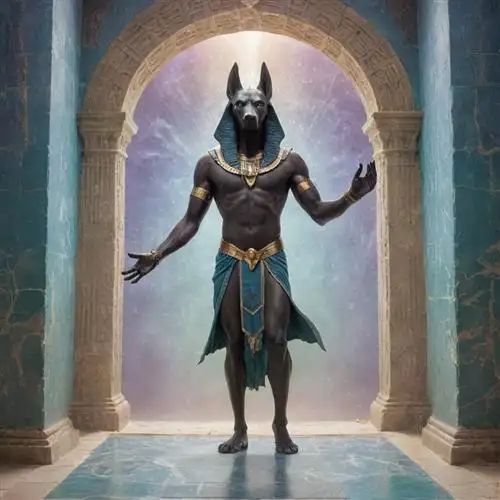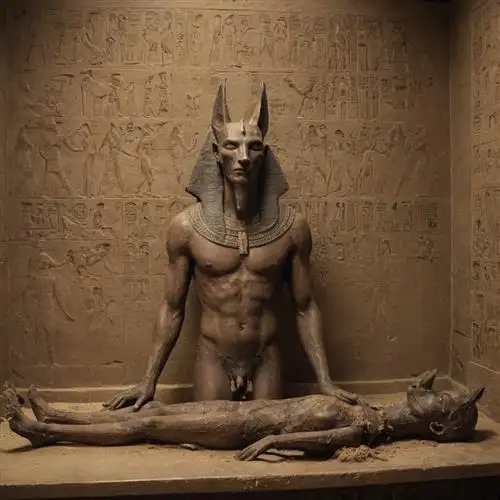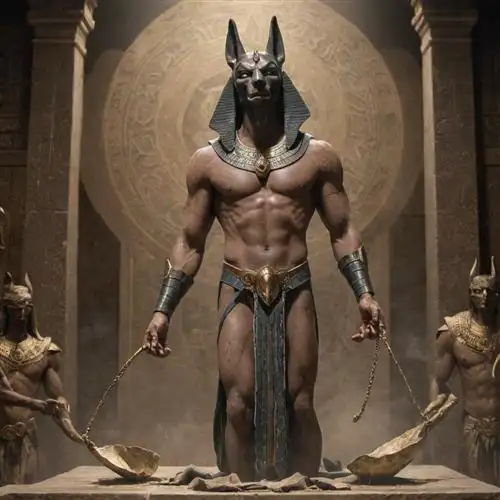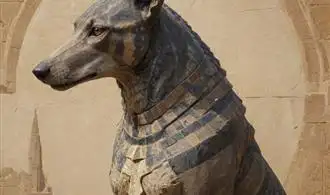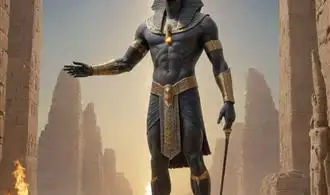
The Jackal Headed God
Anubis, the enigmatic jackal-headed deity, has long captivated the imaginations of those delving into the rich tapestry of ancient Egyptian mythology. Beyond the iconic imagery, Anubis' symbolism runs deep, encompassing themes of death, the afterlife, and the sacred rituals that guided the deceased on their eternal journey. Exploring the deeper significance of Anubis' jackal-like form reveals a multifaceted deity whose influence extended far beyond the realm of funerary rites.
The jackal, a cunning and adaptable canine species native to the deserts of Egypt, held a profound significance in ancient Egyptian cosmology. These resilient creatures were often observed near burial sites, scavenging the remains of the dead. This association with death and the underworld led the Egyptians to revere the jackal as a symbol of the transition between the mortal and divine realms. Anubis, as the jackal-headed god, embodied this liminal space, serving as a guide and protector for the deceased on their journey to the afterlife.
Anubis' role as the overseer of the embalming process and the weighing of the heart during the final judgment of the dead further cemented his importance in the Egyptian funerary tradition. The jackal-headed deity was responsible for the mummification of the deceased, ensuring the preservation of the physical body, which was seen as essential for the soul's continuation in the afterlife. Moreover, Anubis presided over the pivotal moment of the The Bold Predictions for Anubis and the Afterlife, where the heart of the deceased was weighed against the feather of truth, determining their worthiness to enter the realm of the dead.
The symbolism of Anubis' jackal-like features extends beyond his role in the afterlife. The jackal's acute senses, keen intelligence, and adaptability were revered by the Egyptians, who saw these traits as embodying the ideal characteristics of a deity tasked with guiding the dead. The jackal's ability to navigate the border between the living and the dead further solidified Anubis' position as a liminal figure, capable of traversing the realms of the mortal and the divine.
Anubis and the Afterlife
Anubis, the ancient Egyptian god of the dead, holds a profound significance in the realm of the afterlife. As the guardian of tombs and the embalming process, Anubis played a crucial role in the journey of the deceased into the next life. In this article, we will delve into the unusual insights that shed light on the symbolism of Anubis and his profound connection to the afterlife.
One of the most intriguing aspects of Anubis' symbolism is his role as the psychopomp, the guide who leads the deceased into the afterlife. This is often depicted in ancient Egyptian art and funerary texts, where Anubis is shown weighing the heart of the deceased against the feather of Ma'at, the goddess of truth and justice. This ritual, known as the "Weighing of the Heart," determined the worthiness of the individual to enter the afterlife. Anubis' presence as the overseer of this crucial moment highlights his importance in the transition from life to death.
Moreover, Anubis' association with mummification and the preservation of the body is a testament to his significance in the afterlife. As the god who presided over the embalming process, Anubis ensured that the deceased's physical form remained intact, allowing the soul to return to the body during the journey to the afterlife. This belief in the importance of the physical body in the afterlife is a unique aspect of ancient Egyptian theology, and Anubis' role as the guardian of this process is pivotal.
Another fascinating insight into the symbolism of Anubis can be found in his connection to the concept of rebirth and regeneration. In some ancient Egyptian myths, Anubis is depicted as the one who guides the deceased through the underworld, ultimately facilitating their transformation and rebirth. This belief in the cyclical nature of life and death, with Anubis as the guiding force, adds depth to the understanding of his role in the afterlife.
Furthermore, the depiction of Anubis in ancient Egyptian art and iconography often showcases his distinctive jackal-headed form. This animal association is believed to have symbolic significance, as the jackal was seen as a creature that inhabited the liminal spaces between the world of the living and the dead. Anubis' jackal-headed form, therefore, represents his position as the intermediary between these two realms, reinforcing his role as the guardian of the transition from life to death.
The Mummification Process
The role of Anubis, the jackal-headed Egyptian deity, in the mummification process was paramount. As the god associated with embalming and the afterlife, Anubis oversaw every step of the intricate ritual that transformed the deceased into a mummy. This process was not merely a physical transformation but a spiritual one, ensuring the individual's successful passage into the afterlife.
At the heart of the mummification process was the removal of the internal organs, a task typically undertaken by the "sem" priest, who represented Anubis. The brain was extracted through the nose using a hooked instrument, while the other vital organs were removed and placed in canopic jars, each guarded by a different deity. The body was then filled with natron, a salt-like substance, to desiccate the flesh and preserve the form.
The wrapping of the body in linen bandages was a sacred ritual, with each layer imbued with prayers and incantations to Anubis. The priests would carefully place amulets and talismans between the layers, providing the deceased with protective charms and symbols of rebirth. The final wrapping was completed with a large sheet of linen, often decorated with images of Anubis and other deities.
Throughout the mummification process, Anubis was invoked and honored. The jackal-headed god was believed to guide the soul of the deceased through the dangerous underworld, ensuring a safe passage to the realm of the afterlife. The presence of Anubis, both physically in the form of statues and figurines placed within the tomb, and spiritually through his divine intervention, was crucial to the success of the mummification ritual.
Anubis and the Weighing of the Heart
The ancient Egyptian god Anubis, often depicted as a jackal-headed deity, holds profound significance in the symbolism and rituals of the ancient civilization. One of the most intriguing aspects of Anubis' iconography is his role in the Weighing of the Heart ceremony, a pivotal moment in the Egyptian afterlife journey.
The Weighing of the Heart was a crucial part of the funerary rites, where the deceased's heart was weighed against the feather of Maat, the goddess of truth, justice, and cosmic order. Anubis, the guardian of the necropolis and the embalmer of the dead, played a central role in this ceremony. As the dead person's heart was placed on one side of the scale, Anubis carefully observed the proceedings, ensuring the delicate balance was maintained.
The significance of this ritual lies in the belief that the heart was the seat of the individual's moral and ethical worth. If the heart balanced evenly with the feather of Maat, it signified the deceased had lived a righteous life, and their soul was deemed worthy to proceed to the afterlife. However, if the heart was found to be heavier, it was devoured by the devourer, a monstrous creature with the head of a crocodile, the front legs of a lion, and the hindquarters of a hippopotamus, symbolizing the individual's moral failings and the denial of their passage to the afterlife.
Anubis' role in this ceremony was crucial, as he not only presided over the weighing but also guided the deceased through the various stages of the afterlife journey. His presence ensured the integrity of the process and the protection of the soul during this pivotal moment. The jackal-headed god's association with the embalming process and his status as the gatekeeper to the underworld further reinforced his importance in the Egyptian funerary rites.


